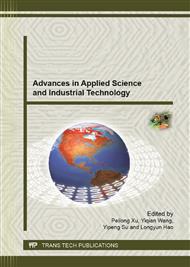[1]
Ahluwalia R, Unnava H R, Burnkrant R E. The moderating role of commitment on the spillover effect of marketing communications[J]. Journal of Marketing Research, 2001, 38(4): 458-470.
DOI: 10.1509/jmkr.38.4.458.18903
Google Scholar
[2]
Bagozzi R P, Yi Y. On the evaluation of structural equation models[J]. Journal of the academy of marketing science, 1988, 16(1): 74-94.
Google Scholar
[3]
Boqing Ye, Haijiang Huo. Based on the combination of brand negative information of product reverse action research[J]. East China Economic Management, 2011, 25(11): 130-132.
Google Scholar
[4]
Dahlen M, Lange F. A disaster is contagious: How a brand in crisis affects other brands[J]. Journal of Advertising Research, 2006, 46(4): 388-397.
DOI: 10.2501/s0021849906060417
Google Scholar
[5]
Fornell C, Larcker D F. Evaluating structural equation models with unobservable variables and measurement error[J]. Journal of marketing research, 1981, 18(1): 39-50.
DOI: 10.1177/002224378101800104
Google Scholar
[6]
Janakiraman R, Sismeiro C, Dutta S. Perception Spillovers Across Competing Brands: A Disaggregate Model of How and When[J]. Journal of Marketing Research, 2009, 46(4): 467-481.
DOI: 10.1509/jmkr.46.4.467
Google Scholar
[7]
Lei J, Dawar N, Gürhan-Canli Z. Base-Rate Information in Consumer Attributions of Product-Harm Crises[J]. Journal of Marketing Research, 2012, 3(49): 336-348.
DOI: 10.1509/jmr.10.0197
Google Scholar
[8]
Lei J, Dawar N, Lemmink J. Negative spillover in brand portfolios: exploring the antecedents of asymmetric effects[J]. Journal of marketing, 2008, 72(3): 111-123.
DOI: 10.1509/jmkg.72.3.111
Google Scholar
[9]
Roehm M L, Tybout A M. When will a brand scandal spill over, and how should competitors respond?[J]. Journal of Marketing Research, 2006, 43(3): 366-373.
DOI: 10.1509/jmkr.43.3.366
Google Scholar
[10]
Siomkos G J, Kurzbard G. The hidden crisis in product-harm crisis management[J]. European Journal of Marketing, 1994, 28(2): 30-41.
DOI: 10.1108/03090569410055265
Google Scholar
[11]
Siomkos G, Triantafillidou A, Vassilikopoulou A, et al. Opportunities and threats for competitors in product-harm crises[J]. Marketing Intelligence & Planning, 2010, 28(6): 770-791.
DOI: 10.1108/02634501011078156
Google Scholar
[12]
Xingdong Wang, Fengjie Jing, Ming Tu. Single (group) onset product harm crisis industry spillover effects of study[J]. Forum on Science and Technology in China, 2012, 11: 58-64.
Google Scholar
[13]
Zhao Y, Zhao Y, Helsen K. Consumer Learning in a Turbulent Market Environment: Modeling Consumer Choice Dynamics After a Product-Harm Crisis[J]. Journal of Marketing Research, 2011, 48(2): 255-267.
DOI: 10.1509/jmkr.48.2.255
Google Scholar
[14]
Zheng Fang, Minghua Jiang Yang Yang, product harm crisis response strategy research on the influence of brand equity-Corporate reputationand the crisis type of regulating effect, [J]. Management World, 2010(12): 105-118.
Google Scholar
[15]
Zheng Fang, Yang Yang, Minghua Jang, Wei Li, Shan Li, Defensible product harm crisis response strategy research on the influence of brand equity: regulated variable and intervening variable role[J]. Nankai Business Review, 2011, 14(4), 69-79.
Google Scholar


